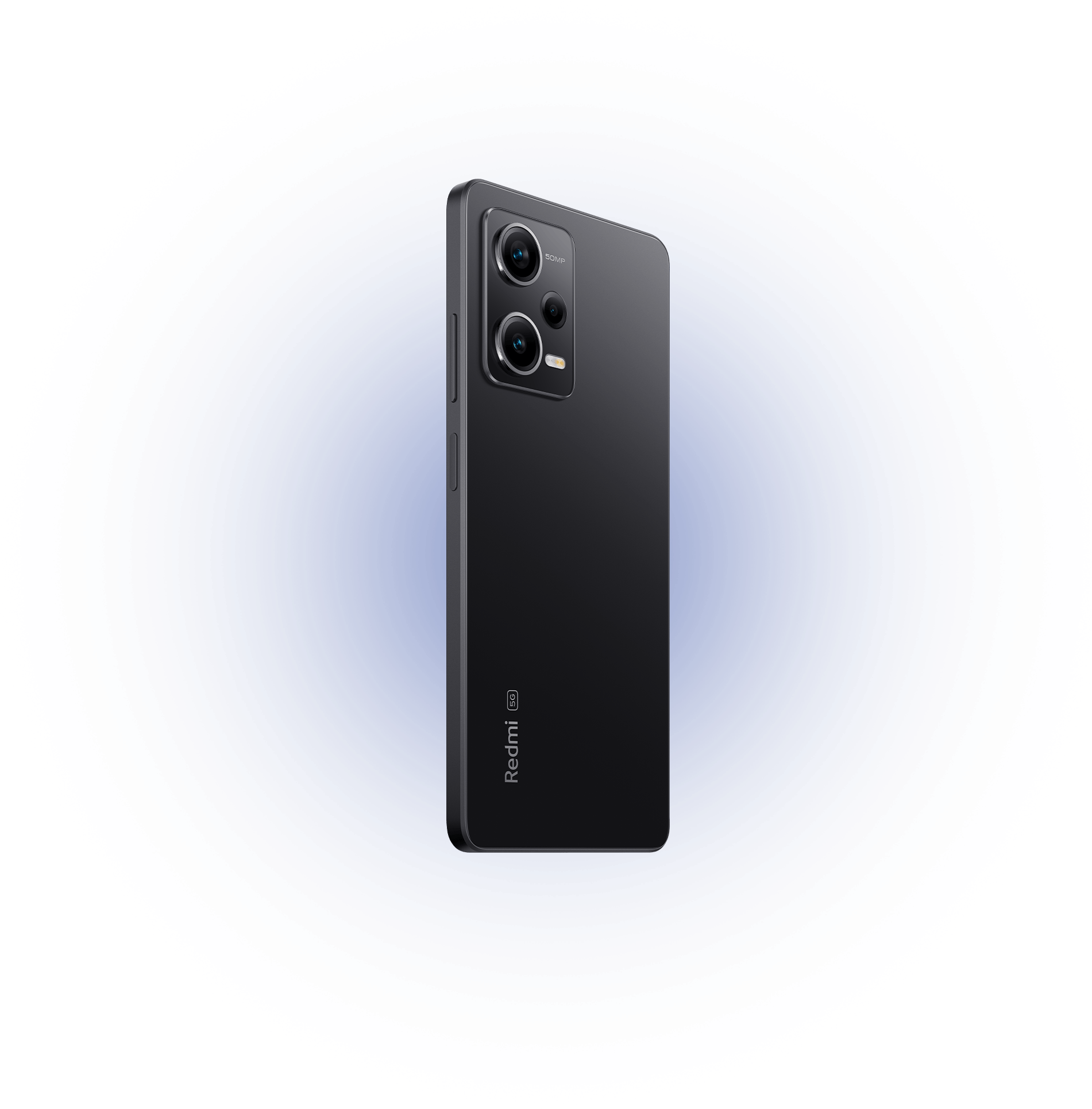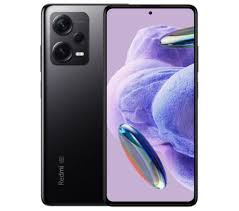Redmi Note 12 Pro 5G Review: Is This the Budget King of 2025?
When Xiaomi launched the Redmi Note 12 Pro 5G in 2023, it immediately drew attention for delivering flagship-level features at mid-range pricing. Two years later, it continues to turn heads—especially among budget-conscious buyers yearning for 5G connectivity, a top-tier camera, and blazing-fast charging—all without bleeding-edge pricing. This deep dive examines every critical aspect of the device to answer: is the Redmi Note 12 Pro 5G still the budget king of 2025?
2. Design & Build
-
Dimensions & Weight: At 163 × 76 × 8 mm and 187 g, the Note 12 Pro 5G feels light and reasonably compact for its screen size
-
Materials: It features a Gorilla Glass 5 front and a matte-finished glass back, paired with a plastic frame. This combination strikes a balance between affordability and a more premium feel
-
IP Rating: Offers IP53 dust and splash resistance—a rare ruggedness boost for devices under $400
-
Fingerprint Sensor: Side-mounted, integrated with the power button—easy reach and reliable performance
3. Display
-
Size & Panel: A 6.67-inch OLED screen with 1080 × 2400 resolution (~395 ppi), delivering vivid visuals and deep blacks
-
Refresh Rate: Smooth 120 Hz scrolling and animations, with adaptive switching down to 60 Hz in some apps (like YouTube) to save power
-
Brightness & Color: Features Dolby Vision, HDR10+, 10-bit color depth, and up to 900 nits peak brightness (HBM) for outdoor readability
-
Touch Responsiveness: Recognizes touches up to 240 Hz scan rate, ensuring responsiveness and accuracy
4. Performance & Hardware
-
Chipset & RAM: Powered by MediaTek Dimensity 1080 (6 nm), with variants of 6 GB, 8 GB, or even 12 GB LPDDR4X RAM. Plus an optional memory extension feature adds virtual RAM improvement (~+3 GB)
-
Storage: Models offer 128 GB or 256 GB UFS 2.2 storage, but no microSD slot for expansion—so choose wisely
-
Everyday Use: Users report zero lag in daily tasks or video playback. Gaming on titles like Genshin Impact works well if you moderately dial down graphics settings
-
Wireless & Connectivity: Supports 5G (Sub‑6), Wi‑Fi 6, Bluetooth 5.2, dual‑nano SIMs, VoLTE, WLAN calling, NFC in many regions. GNSS works via GPS/GLONASS/Galileo/BeiDou with ~1 m precision outdoors
-
Network Speeds: Notebookcheck recorded iperf3 receive speeds of ~825 Mb/s, which remains excellent for mid‑range performance even in 2025
5. Camera Capabilities
Rear Triple Setup
-
50 MP main sensor (Sony IMX766) with PDAF and Optical Image Stabilization (OIS). Aperture around f/1.9 for light sensitivity and sharpness
-
8 MP ultrawide (119° field-of-view) for landscapes and group shots.
-
2 MP macro for close-up shots.
Front Camera
-
16 MP selfie camera, records up to 1080p video with HDR and portrait modes
Video & Modes
-
Rear camera supports 4K @ 30 fps, 1080p @ 120 fps, and 720p @ 960 fps slow-motion capture
-
Includes AI enhancements, portrait mode, night mode, panorama, HDR optimizations, and up to 10× digital zoom (though quality drops above 2×)
Image Quality
-
Daylight shots deliver crisp detail, accurate color, and solid dynamic range thanks to the powerful Sony sensor and OIS
-
Low-light performance is decent—noisy and sometimes over-processed with filters, especially indoors or at night—though OIS helps stabilize longer exposures
-
Ultrawide suffers from distortion and softness near the edges
-
Reddit users noted:
“Spend a little more (Pro+ vs Pro) … more refined camera system with 200 MP main lens … faster charging …” implying the Pro is competent but beaten by its sibling
6. Battery & Charging
-
Capacity: 5,000 mAh battery—which offers solid endurance for most users.
-
Fast Charging: Includes 67 W turbo charging, reaching full charge in under 46 minutes. Charger included in box
-
Standby & Usage: In tests, video loop playback lasted 11 hours 25 minutes with airplane mode on, 50 % brightness—impressive for a mid-range phone
-
Real‑World Usage: With heavy-use (gaming, 120 Hz, 5G), expect 5–6 hours screen-on time; lighter users can stretch into day-and-a-half territory
7. Software Experience
-
Ships with MIUI 14 based on Android 13 when launched. Customisable theme engine, but includes some bloatware—removable after setup
-
Updates: Xiaomi typically offers two major Android updates for this model; support limited by 2025 standards, especially as the device shipped with Android 13.
8. Pros & Cons
✅ Pros
-
Flagship-style 50 MP OIS camera
-
High refresh rate OLED display, Dolby Vision support
-
Fast charging + generous battery
-
5G + Wi‑Fi 6, dual‑SIM support
-
IP53 rating, side fingerprint sensor
-
Affordable for performance and feature set
❌ Cons
-
No microSD expansion
-
Moderate low‑light and ultrawide camera performance
-
Only mid‑tier chipset—good, but no flagship benchmarks
-
MIUI bloatware and limited update lifespan
-
No stereo speakers, and video stabilization limited
9. Comparison with Redmi Note 12 Pro+ and Competitors
-
The Pro+ model boasts a 200 MP main sensor, faster charging (e.g. 120 W), OIS, and higher RAM/storage—but also costs significantly more
-
Compared to newer 2025 mid-range models, Note 12 Pro 5G still holds strong:
-
Competes well with Poco M7 Pro 5G, though Note 12 Pro has better camera & charging speed; Poco may offer more Android upgrades
-
Still outpaces more basic Redmi Note 13 or 14 variants in camera and OIS, though display tech in newer models may
-
cus on brighter panels or glass back upgrades
-
10. Real-World Usage Scenarios
🔍 Daily Tasks
Web browsing, video streaming, social media, light multitasking—all smooth thanks to the Dimensity 1080 and 120 Hz AMOLED panel.
🎮 Gaming
Plays mainstream titles well at medium to high settings. 120 Hz enhances the immersive experience. Battery drain noticeable if gaming long runs.
📷 Photography & Vlogging
Excellent daylight images and steady video capture thanks to OIS; ideal for casual photographers and content creators on a budget. Night mode works but can feel overly processed.
🧳 Travel & Outdoor Use
IP53 rating, fast charging, and excellent connectivity make it reliable for travel. AMOLED display aids readability in sunlight.
11. Is It Still the Budget King in 2025?
The Redmi Note 12 Pro 5G remains highly competitive—delivering camera excellence, fluid display, fast charging, and 5G connectivity at bargain pricing. Although new models may offer refined features such as improved ultrawide sensors, glass frames, or longer update support, few match its balance of performance and value in the mid-range segment.
For users prioritizing optical stabilization, OLED display, and a well-rounded smartphone, it remains a no-brainer—even two years after launch.
12. Tips Before Buying
-
Opt for ≥ 256 GB storage if you record a lot of 4K video or install large apps.
-
Compare software update policy in your region—Xiaomi’s support may vary.
-
Consider accessories like a case, screen protector, and fast-charger backups.
-
Keep display refresh rate at adaptive 120 Hz for best visual experience and power balance.
13. Final Verdict
Redmi Note 12 Pro 5G is a compelling mid-range pick that still delivers in 2025:
-
✅ Flagship-style camera with OIS
-
✅ Bright OLED 120 Hz display
-
✅ 5,000 mAh battery + 67 W charging
-
✅ Robust connectivity and build features



